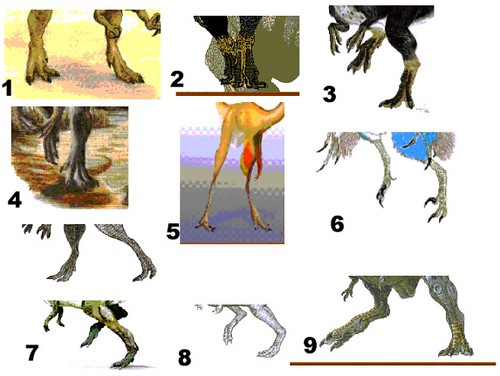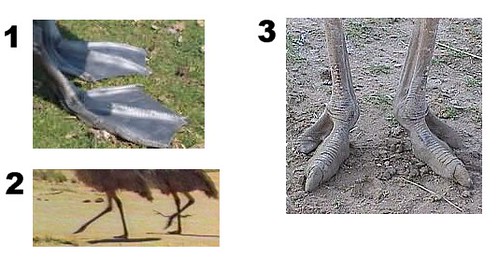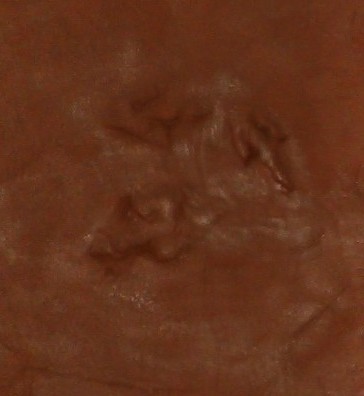
All of these were taken from the dinosuricon (sans permission, so don’t tell them) and depict mostly theropods moving at a walking pace, or even standing still as in figure 1-5. While running it would be acceptable for one of these creatures to be at some point during the stride supported by a single toe. This is because the animal’s momentum allow it to maintain a forward motion that outweighs the downward pull of gravity. It is even possible that for some of the smaller theropods, that they could be caught mid stride with neither foot touching the ground. Artists don’t typically do this because it takes more skill to make it look like the subject is a part of its environment when no even a foot is touching it. Since these dinosaurs are not moving at a hurried pace, it is reasonable to suspect that they should stand more naturally.
The natural stance of any animal can be determined by comparing its footprints to its skeleton, using modern analogues as guides. Birds, usually rheatites, are the best analogues we have for bipedal, non-avian dinosaurs. Humans are just all wrong for this purpose. As one can see from figure two, birds lack a heel pad and walk with the full toe on the ground until the other foot it planted, and the first is lifted up. Looking at dinosaur tracks, figure 3, we see the same pattern. The whole of each toe leaves its mark and what looks like a heel pad is only seen in deep prints that would have brought the metatarsus in contact with the mud. Don’t misunderstand. Dinosaurs and birds were still digitigrade, since they didn’t use the heel for walking as we humans do, but they certainly didn’t go around on the tips of their toes like an antelope. If this somehow diminishes dinosaurs, making them seem less agile or graceful, then so be it; “accuracy before tact” as they say.


1 comment:
good stuff.....will watch for more.
D
Post a Comment